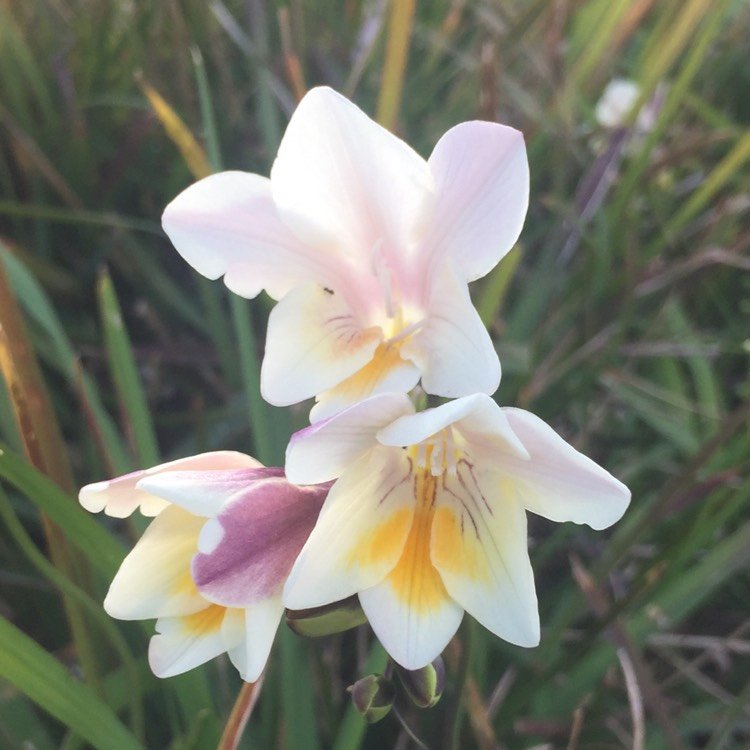
Freesia fergusonaie
A delicate and seldom-seen wild freesia, Freesia fergusoniae is native to the winter rainfall regions of the Western Cape, South Africa, where it grows on rocky, well-drained slopes and flats, often in sandy or clay-rich soils. It produces slender stems topped with gracefully nodding, lightly fragrant flowers in soft ivory to pale yellow tones, often with subtle markings on the lower tepals. The narrow, grass-like leaves emerge in autumn and go dormant with the arrival of summer heat.
In cultivation, F. fergusoniae is best suited to Mediterranean-style gardens or containers in regions with mild, wet winters and dry summers—such as coastal California. It thrives in sharply drained soil in full sun, where it can remain relatively dry during dormancy. In colder climates, it is best grown in pots and overwintered under frost-free conditions in a cool greenhouse or sunroom. The bulbs should be planted in autumn and kept just moist through winter until blooming in late winter or early spring.
Hardy to around USDA Zone 9 (light frost), though with protection or indoor cultivation, it can be enjoyed more widely. A subtle and elegant species for collectors of South African bulbs or lovers of the unusual and ephemeral.
A delicate and seldom-seen wild freesia, Freesia fergusoniae is native to the winter rainfall regions of the Western Cape, South Africa, where it grows on rocky, well-drained slopes and flats, often in sandy or clay-rich soils. It produces slender stems topped with gracefully nodding, lightly fragrant flowers in soft ivory to pale yellow tones, often with subtle markings on the lower tepals. The narrow, grass-like leaves emerge in autumn and go dormant with the arrival of summer heat.
In cultivation, F. fergusoniae is best suited to Mediterranean-style gardens or containers in regions with mild, wet winters and dry summers—such as coastal California. It thrives in sharply drained soil in full sun, where it can remain relatively dry during dormancy. In colder climates, it is best grown in pots and overwintered under frost-free conditions in a cool greenhouse or sunroom. The bulbs should be planted in autumn and kept just moist through winter until blooming in late winter or early spring.
Hardy to around USDA Zone 9 (light frost), though with protection or indoor cultivation, it can be enjoyed more widely. A subtle and elegant species for collectors of South African bulbs or lovers of the unusual and ephemeral.







